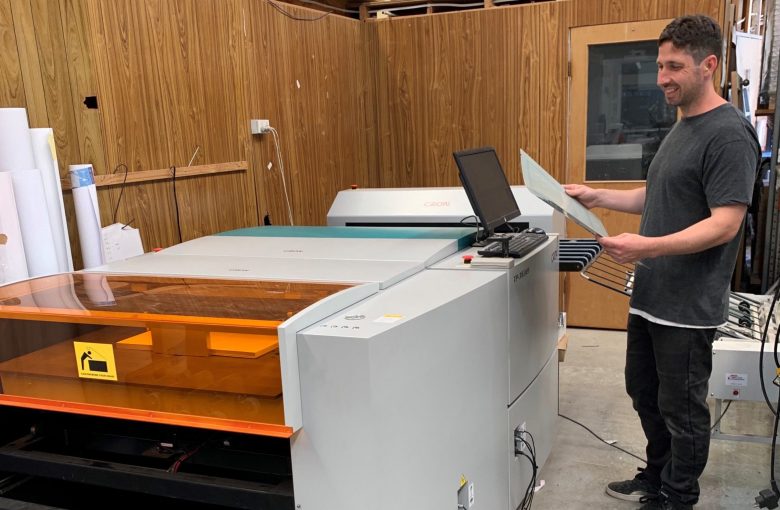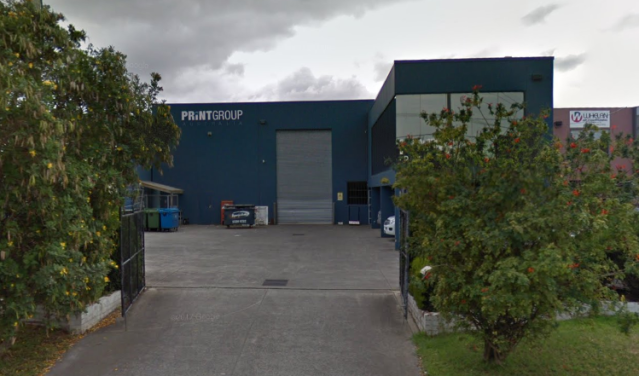
Cost savings, increased productivity and a reduced environmental impact were the key drivers behind Bounty Print’s decision to upgrade its computer-to-plate (CTP) technology to a CRON TP-3632F thermal imaging system.
The CRON was sourced through Currie Group in January this year and is now fully operational at the digital and offset specialist in Melbourne’s Ringwood with all staff trained on how to use the machine.
Bounty Print owner Roland Olney said the CRON is producing twice as many plates in the same time as the company’s former violet CTP technology, an ECRM Mako 4Matic.
“We upgraded the computer-to-plate system from violet plates which were consuming chemicals and water, to the new thermal plate technology which uses no water and requires no chemicals,” Olney told Sprinter.
“The CRON Thermal CTP system produces high quality output and is better for the environment.
“We have had our training and we are now up and running with it. Currie Group’s training routine was very good and was all done in one day as the machine is not a complex machine to operate.”
Technical features
The CRON TP-3632F model can deliver 28 plates per hour up to 2800 dpi. The unit’s maximum plate site is 925mm x 660mm with a minimum of 240mm x 320mm.
It comes with an automatic positioning system and a built-in air cooling and purifying system. An automatic loading system and stacker is optional on the unit.
Bounty Print’s core business is in the offset commercial print areas including anything from business cards and leaflets to 400-page perfect bound books and various saddle-stitched magazines.
The business operates with a full suite of Horizon finishing equipment, illustrating its long-standing relationship with distributor, Currie Group.
“Offset is our main core business. We run a 4 colour Shinohara and a 2 colour GTO. We have all the finishing equipment including Horizon saddle stitchers, collators, perfect binders, folders. We are a Currie Group house. They are good people,” Olney said.
Olney said he is proud to be able to make capital investments, given the difficulties of 2020 with the COVID-19 pandemic.
The business is now no longer accessing the JobKeeper scheme after experiencing an upturn in work in September, October and November last year.
“We are up and running by ourselves now which is great,” Olney said.
“It would be nice to have the income coming in from JobKeeper but that is not the deal. We are making capital purchases in this marketplace, so we have got a belief in the industry and that the industry will move forward once we get a handle on COVID.
“Once we get the vaccine over here then I think things will really move ahead. They say that when there is a big downturn then you have a big upswing so one goes with the other.”
Olney is concerned about what the finalisation of JobKeeper in March will mean for the broader industry, particularly the parts of the industry that specialise in digital-only printing.
“I think there will be a bit of fallout in the digital area and I think some of the bigger boys have got to question what they are doing at the moment as to whether that stuff is going to come back,” he said.
Comment below to have your say on this story.
If you have a news story or tip-off, get in touch at editorial@sprinter.com.au.
Sign up to the Sprinter newsletter



